Back to search results
Name: McMILLAN, William Northrup KBE, Sir
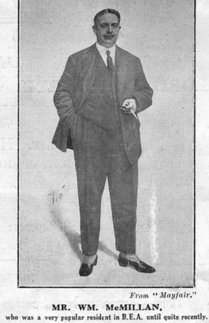
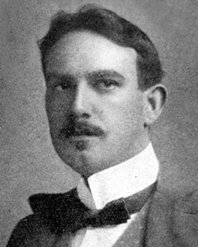
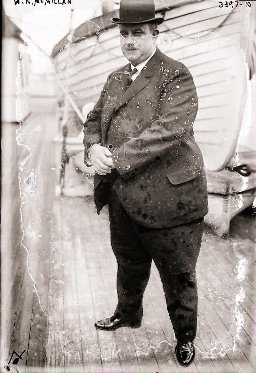
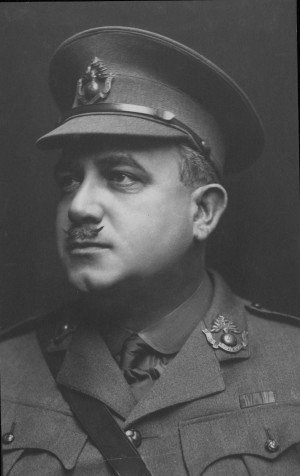
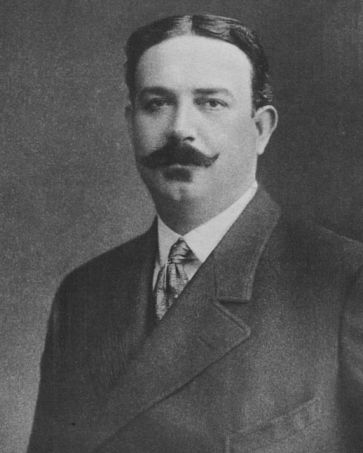
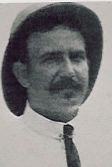
Birth Date: 19.10.1872 St. Louis, Missouri
Death Date: 22.3.1925 Nice, France
Nationality: American
First Date: 1904
Last Date: 1925
Profession: Hunter and explorer, estate owner. American millionaire from St. Louis, Missouri
Area: Juja Farm, Donyo Sabuk; Chiromo at Nairobi
Married: In Leon, Florida 1894 Lucy Fairbanks Webber b. 26.6.1869 Caledonia, Vermont, d. 4.9.1957 Nairobi
Author: further book ref - Barnes, AJ, Globe, Nicholls, North, Mills, Sportsmen, Chandler, Red Book 1912, Mills Norfolk; Judy Aldrick 'Northrup, the Life of William Northrup McMillan', Old Africa Books 2012
Book Reference: Gillett, SE, HBEA, Cuckoo, Best, Random, Jessen, Army Diary, Unger, Sorrenson, Joelson, Adventurers, Cranworth, Bror, Footsteps, Breath, Roosevelt, Mischief, KAD, Hut, Playne, Macmillan, Drumkey, Land, Red 22, Kiambu Scrapbook, Bobs Harries, Pioneers
School: Hill School, Pottstown, Pa. FRGS, CMRZS
General Information:
SE - W.N. McMillan - July 1907
Cuckoo - Built a commodious homestead, equipping the farm with all modern devices for comfort and agricultural work, and generally spared no expense. His hospitable estate soon became the rendezvous for all the ne'er-do-wells in the country, for McMillan had a heart of gold and employed any European who appeared "down and out." His lands were infested with ticks - the curse of the Athi Plains - and these hangers-on were always referred to contemptuously as the "Juja ticks." McMillan was knighted during the Great War for valuable services during the EA Campaign, but died shortly afterwards and is buried on El Donyo Sabuk.
Best - A millionaire said to be nearly seven feet tall and so fat that he went through doors sideways, who experimented with wildebeest farming on his Athi ranch and was later to receive an honorary knighthood from the British.
Jessen - Having bought his farm he installed refrigerating plant, electric light plant, machine and blacksmith's shop, water tower, stables, stores, dairy etc. - the "best and most completely equipped farm in the whole of Africa, if not in the whole world."
Army Diary - 1915 - ... an American weighing 24 stone and a reputed millionaire. 'He did not look well in service kit. His sword belt was 64 inches in diameter.'
Unger - 1909 - Roosevelt Trip - On May 15th the party left the ranch of Sir Alfred Pease for that of Mr George McMullen [sic], a wealthy American from St. Louis
Sorrenson - at the end of 1909 came the case of a Canadian, N. (later Sir Northrupp) McMillan who was allowed to purchase 14,351 acres in addition to the 15,000 acres acquired from the Crown in his own and his wife's names.
Cranworth - his kindness and hospitality were what all who ever knew him can readily imagine, and a friendship was inaugurated between all of us which continued till the day of his death. Macmillan had for years been a mighty big-game hunter and had, usually in company with that gallant character Charles Bulpett (died July 1939) (so widely known and loved as "Uncle Charles"), made many sporting and scientific expeditions into the heart of Africa. He had here at Juja a unique estate of some 40,000 acres, kept partially for farming purposes, but mainly as a private game sanctuary.
Bror - He was a fine fellow
Roosevelt - mighty hunter and explorer of note
KAD 1922 - Elected Member of Legislative Council for Ukamba.
KAD 1922 - President, EASPCA.
KAD 1922 - President, Ulu Settlers' Association;
KAD 1922 - Steward, Jockey Club of Kenya.
KAD 1922 - Vice President, Makuyu Hunt Club
Playne - Juja Farm - One of the most successful stock-raisers in the Nairobi District is Mr W. Northrup McMillan, who arrived in BEA in September 1904, from New Mexico, USA. The Juja Farm, on which he settled in 1905, is some 20000 acres in extent, and about 23 miles from Nairobi railway station. It is bounded by the Athi, Ruero, and Nderugo Rivers, thus being abundantly supplied with water. Cattle, ostriches, sheep, pigs, horses, and mules are all being run under the management of Mr A.B. Duirs, besides which, on 300 acres, lucerne and grain are being cultivated. Mr McMillan owns about 800 cattle, 150 of them being half-bred and thoroughbred ........ The whole of the property is fenced, and as an instance of the up-to-date methods believed in and acted on, it may be mentioned that the house is fitted with electric light, and that ice and power plant have been laid down. In all there are on the Juja Farm 18 house, farm and other buildings. Mr McMillan also holds near the N'Gelani fruit farm 1000 acres at Machakos, where fruit trees are in bearing, and where he intends to go in extensively for stock and agriculture.
Playne - Group photograph of the Colonists' Association of British East Africa (not present)
Drumkey 1909 - Cattle Brand - E1M - B. MacMillan - Juja Fram, Donyo Sabuk
Drumkey 1909 - Vice-President, The Colonists' Association of BEA
Land - Leased 6983 acres at Donyo Sabuk transferred to Sir W.N. McMillan
Red 22 - Member Education Board, Kenya
Red 22 - President, Ulu Farmers' Association, Machakos
Red 22 - Vice-President, Nairobi Polo Club
Land - 1908 - W.N. McMillan - Grazing, 5000 acres, Donio Sabuk, 8-11-04, Registered 9-7-08 and 4,876 acres, Donio Sabuk, 28-12-05, Registered 9-7-08
Kiambu Scrapbook - Mr W.N. McMillan, who came from America, and was later knighted for his financial and practical services to Great Britain, acquired land some 20 miles from Nairobi in the early 1900s. At that time one man was only allowed to lease 5,000 acres on a 99 year lease from the Government at an annual rent of 1/2d. Per acre. Thus in the early maps the 19,000 acres of land that was known as 'Juja' was divided into blocks marked as 'Mr W.N. McMillan's land', 'Major Ringer's land', etc, Mr McMillan having used the names of his friends to acquire the whole 19,000 acres. Later on he added a few more acres to Juja on the Nairobi side of the Ruera River, and then bought Donyo Sabuk Estate comprising 6,900 acres. The farm was called after two West African images brought over to Kenya by Sir Northrup McMillan and known as Ju and Ja. Numerous superstitions surrounded them and eventually Lady McMillan buried them somewhere in the Ndurugu Valley, but she never disclosed their whereabouts. One of the superstitions was that the images would bring bad luck to the owners, some of whom would die at sea. It is interesting to note that Sir Northrup McMillan died at sea off Mombasa on a return journey from England [not so]. Sir Northrup spent approximately £20,000 on improving the estate putting up permanent buildings, trying all kinds of crops and herds before he sold to Mr F.N. Nettlefold in 1919. In 1905 the prefabricated sections of Juja House arrived out from England via ship to Mombasa, train to Nairobi and then mule train to Juja. (In those days it was a 3 1/2 hour journey by mule cart from Nairobi to Juja). As Sir Northrup wanted the house ready for a large Christmas gathering he promised the fundi a bonus if they completed the job in time. They got their bonus, but at the expense of a few crooked walls, and those walls still lean today! Juja was soon a thriving community with an area of one square mile fenced in on 3 sides, with the river as a fourth protection, to a height of 10 feet, to keep out wild animals. Within the compound was a Post Office and Telegraph Office. Housing for a Manager, a European Chauffeur, two European Gardeners, a European Groom, a European Storeman etc., There was stabling for 26 horses, which were carefully netted in at night against the dreaded fly. Each horse had its own syce who slept and ate with his horse, and when the animal was ridden out the syce ran alongside so that he was there to take the reins at any time. There were also cages for wild animals, including the lion, which were chained by day to iron rings set in concrete just outside the front door at Juja House. One amusing story often told in connection with these lions, was of Billiam Webb who lived some miles away in Ruiru. Billiam was invited to lunch one day and bicycled the odd 15 miles down the dusty, hot road to find that a lady lion was on heat and a completely strange male lion in attendance. Sir Northrup was seated upon the verandah chuckling with delight, whilst his guests and servants had sought refuge in the loft. Billiam was bidden to enter, but having more respect for his skin he leapt upon his bicycle and headed for home - minus his drink and lunch! A platoon of Sudanese soldiers and the higher class Africans lived near the gate within the compound, whilst the rest lived in rondavels outside. A concrete dam and causeway was built across the Ruera River, originally so that the gardens could be irrigated, but later a Power House and Refrigerating Plant was built which supplied electricity to the compound until 1948 when Juja went over to EAP&L. In the valley were built workshops and a light railway which was used to carry ice blocks up to the owners house, a climb of 120 feet. Juja House was surrounded by formal gardens and approached by an avenue of trees, century plants and flowers. Below the house were large vegetable gardens, which provided the compound with quantities of fresh fruit and vegetables, and also grain and maize. It is probable that the surplus was sold. Attempts were made to farm ostriches, pigs, cattle and sheep; all were more or less defeated by disease. However a slaughterhouse, bacon factory, dairy and cheese factory were built, also an elaborate block of stone pig houses. From this ran a light railway to facilitate cleaning out the pig houses. Juja was famed for its hospitality and there was a camping site especially set aside for any passing safaris to use. Colonel Theodore Roosevelt was on one of these safaris and indeed stayed at Juja for some time. During his stay he and Sir Northrup McMillan had a party in Nairobi and afterwards feeling that the night was yet young, took two stone idols from the gates of the Khoja Mosque. These they placed in front of the fireplace in Sir Northrup's Nairobi house. A few days later, when the hue and cry was at its height, the District Commissioner called to see Sir Northrup on other business and saw the images. In order to avoid a scandal (particularly as Colonel Roosevelt was shortly to stand for an election in America) the DC advised Sir Northrup to dispose of the idols as quickly and quietly as possible. Nothing more was heard of them until about 1937 when some thorn trees were being removed on Juja in order to enlarge the dam. The idols were unearthed at the base of one of the thorn trees and at first they were thought to be the missing Ju and Ja. Later they were taken to the British Museum to be identified and exhibited. By then the DC had retired and was living in England. Imagine his surprise and consternation when he chanced to see the stone images, which he thought to be well and truly buried, on show in the British Museum! There was a smaller house, Long Juju, on the Ndurugu River, 4 miles across the plains from Juja House, and it was near here that the ostrich farming was carried out. It was said that when the hospitality at Juja House became too noisy, Lady McMillan would order her mule trap, and accompanied by her syce, would drive across to Long Juju in search of peace and quiet. From 1914 to 1918 Juja House was used as a hospital and convalescent home for British Officers. The Farm abounded in game, and indeed having attempted all kinds of farming, without success, Sir Northrup sold Juja in 1919 as (to quote from the sales catalogue) …….. 'the finest big game estate in all Africa'. It was bought by Mr F.N. Nettlefold, a wealthy Englishman who resided in England, and who had many business interests around the world, including rubber estates in Malaya and oil fields in Roumania. Sir Northrup went to live at Donyo Sabuk House, which he had recently built.
Bobs Harries - History of Thika - Major McMillan - In 1917 he was driven around Nairobi by a man called Fenton, in an old type box body car. Mr Fenton, who was a very old man, came from Kiambu. Major McMillan was an enormous man and could not get into the car, so he used to squeeze in as far as possible and then was driven around Nairobi with one of his legs and part of his body still outside. His own private car was designed with a special seat which was cut out at the back to enable him to get in and out of it. Likewise at the National and Grindlay's Bank in Nairobi, the management had a seat specially constructed for Major McMillan so that when he visited the bank he could sit down whilst doing his business. Many tales have been told of his funeral. He was buried on Ol Donyo Sabuk. Hundreds of cars poured down the Thika Road on that day. The hearse was made with skis on the bottom and a tractor pulled it up the hill, followed by the mourners. Very many cars burned out their clutch-plates and the tractor eventually reached the shoulder of the hill and stopped, so the burial took place there instead of at the top, which was the original plan. One of the few oak trees in Kenya still survives by the grave.
Land - 1912 - W.N. McMillan - Buildings, 5.18 acres - Nairobi - 5/5/11 - Leasehold for 91 years from 1/1/12 - Granted in exchange for old grants surrendered - Registered 27/4/12
FindaGrave on Donyo Sabuk mountain facing NE approx 4 Kilometres from the entrance to the park - William Northrup McMillan 19/10/1872 - 22/3/1925 and his wife Lucie 26/6/1869 - 4/9/1957 until the day break and the shadows flee. The tablet carrying this inscription is now missing.
Agricultural Journal 1908 - Brands allotted and registered - R. MacMillan, Juja Farm, Donyo Sabuk - Kiambu E1M
The Globe Trotter 6/3/07 - W.N. McMillan is having stables built in the Highlands not far from town. This means a good deal to racing interests in the Protectorate and will give a big impetus to the 'Sport of Kings'
Nicholls - son of the founder of the American Car & Foundry Company. He went to the EAP via the Blue Nile in 1903, with his wife Lucie Webber, of Northampton, Massachusetts, a talented artist and musician. He bought land near Ol Donyo Sabuk, a mountain near Thika, and started a farm that he called Juja. Immensely rich, he ordered a farmhouse of asbestos and steel, designed by an English architect, to be made for him in Britain and transported to Nairobi in sections. Juja was begun in 1905, on a high bluff overlooking a river; by 1908 it had electric light, a telephone, an ice-making plant, bungalows for farm workers, a bachelors' mess (in which McMillan started the Juja Club in 1910), farm offices, a dairy room and post office and telegraph station. In the farmhouse itself, surrounded by verandahs shaded by vines and bamboo blinds, were luxurious teakwood chairs, a huge telescope to see game, a pianola and running water, and the walls were ornamented with the horns of wild animals of every sort. Although McMillan spent between £50,000 and £60,000 on the place, Lucie did not like it, and before the First World War he bought for her from Ewart Grogan the stone house Chiromo in Nairobi. When young, McMillan was tall and muscular, with a Texas drawl which abruptly faded as his wife drew near. In middle age his weight increased to such an extent that no diet could control it. The Africans called him the man who had to spit sideways, or Mkora (rogue) because he had so many properties that he could not settle anywhere (the McMillans also kept a house in Berkeley Square, London, and rented Bicton, Lord Clinton's seat at East Budleigh, Devonshire). He rode in a buckboard driven by four white mules until cars came to the EAP, when he acquired a Cadillac with a specially wide and strengthened front seat, on which he spread with his frail-looking, slender, gentle, white-haired wife beside him. At over 20 stone, he developed pleurisy and heart trouble, and died at Nice in 1925 at the age of 52. His body was returned to Kenya, to be buried on Ol Donyo Sabuk at a site he had chosen himself. Carrying his immensely heavy coffin up the mountain was a problem, but the grave was eventually attained, on an open space overlooking the vast plain below and the Ithanga hills beyond, beneath one old, gnarled tree. There was a wild beauty about the place. Every society needs its benefactors, and the McMillans were the EAP's. They were exceedingly generous, financing the building of the YMCA in 1911, the Scott Sanatorium which was so useful in WW1, the McMillan Library built later in Nairobi, and many other enterprises. They also ran Chiromo and Juja farm as soldiers' convalescent homes in WW1. McMillan was knighted for his philanthropy - his Canadian birth allowed him to enjoy this British accolade.
Mills - Sir William Northrup McMillan was born at St. Louis, Missouri, USA on 19th October 1872, the son of Canadian parents. He was educated at the Hill School, Pottsdown, Pa., and at the age of 18 engaged in ranching in New Mexicao until he reached his majority, when he returned to his native town of St. Louis and went into business until 1898. At the end of that period he transferred his activities to London, where he continued his business life until 1901. It was at this stage in his career, when he was still under 30, that the fascination of big game hunting and exploration in Africa attracted his attention. For four years between 1901 and 1905 he followed his inclinations in that direction and travelled extensively. In 1894, during his business career in St. Louis he married Lucia [sic] Fairbanks Webber of Northampton Massachusetts. In 1905 he settled down in East Africa, the country that was to become his home for 20 years. Sir Northrup McMillan was knighted on 1st January 1918 as a tribute to his conspicuous services to the Empire and East Africa, particularly during the war. He was a fellow of the Royal Geographical Society and a Corresponding Member of the Sociological Society. He also held the distinction of member of the order of the Cross of Solomon and Star of Ethiopia. Sir Northrup McMillan joined the 25th (Service) Battalion of the Royal Fusiliers (Frontiersmen) under Colonel Driscoll as a second Lieutenant. He quickly rose to the rank of Captain and subsequently to that of Major. He was employed on lines of communication in East Africa, work which he carried out with great ability. Sir Northrup was not only an energetic public-spirited worker in the interests of white settlement and the welfare of all races in the colony, but who combined with his public service practical regard for the individual member of the white population. He was a man of noted generosity, a generosity of mind and outlook as well as of pocket. What Sir Northrup said, he knew to be his convictions and although he was a man of big and varied interest it can never be said of him that he was other than an unselfish helper in the cause of the Empire in Africa.
Sportsmen - Mr William Northrup McMillan of 19 Hill Street, Berkeley Square, W., son of the late Mr William McMillan, of St. Louis, USA, was born on October 19th 1872 and educated at a military Academy in Pennsylvania, afterwards entering his father's business until 1898, when he came to England and established an office in London. In the spring of 1902 Mr McMillan took up big game shooting, a branch of sport with which he has ever since been prominently identified. Mr McMillan's first experiences of African shooting and exploration were gained in Abyssinia, in 1902, and in the following year he thoroughly explored the Blue Nile, and in 1903-4 he made a trip on the Baro and Sobat River, from the Baro River to Lake Rudolf. In the autumn of 1904 Mr McMillan went to British East Africa on another big game expedition, and was so taken up with the country that he entered into negotiation with the Government and acquired a large farm. From that time Mr McMillan has resided principally in East Africa, and has enjoyed to the full the facilities for big game hunting offered by that country. Mr C.W. Lloyd Bulpett's interesting book "A Picnic Party in British East Africa" contains a description of one of Mr McMillan's expeditions, with some account of the big game shooting in the Soudan. Mr McMillan had the honour of entertaining Mr Roosevelt when that distinguished statesman and sportsman visited East Africa for big game shooting. The ex-President spent some 6 weeks with him and enjoyed excellent sport, the visit being looked upon by Mr McMillan as one of his most pleasant recollections. Amongst other sports that Mr McMillan has enjoyed are fishing and racing; he has fished both in America and Africa, and in 1910 and 1911 he visited California, where splendid sport was obtained tuna fishing. Mr McMillan had a racing stable in East Africa for 3 years, prior to his revisiting this country in 1909, and he re-started it immediately on his return. He is one of the trustees of the Turf Club of British East Africa. Whilst in England the pleasures of partridge and pheasant shooting were enjoyed on a capital shoot of 3,500 acres near Kingsbridge, Devon. Yachting and motoring have also given him some pleasurable holidays, but it is in the excitement of big game shooting that he has found his ideal sport, and the many fine trophies that have fallen to his share, some illustrations of which appear in this volume, are ample proof of his prowess with the rifle and of the resources of North and East Africa from a sportsman's point of view.
Red Book 1912 - W.N. McMillan - Nairobi
Gazette - 12/11/1919 - Register of Voters - Nairobi, South Area - Sir William Northrup McMillan - Chiromo and Lady Lucie McMillan - Chiromo
Jessen - Purchased 10,000 acres from Govt. 20 miles East of Nairobi - 'Juja Farm' & 10,000 acres from Major Ringer.
Gazette - 17/2/1926 - Probate and Administration - Sir William Northrup McMillan late of Chiromo, Nairobi who died at Nice in France on 22 March 1925
Chiromo became the Louise Decker Home for aged Europeans.
Back to search results






